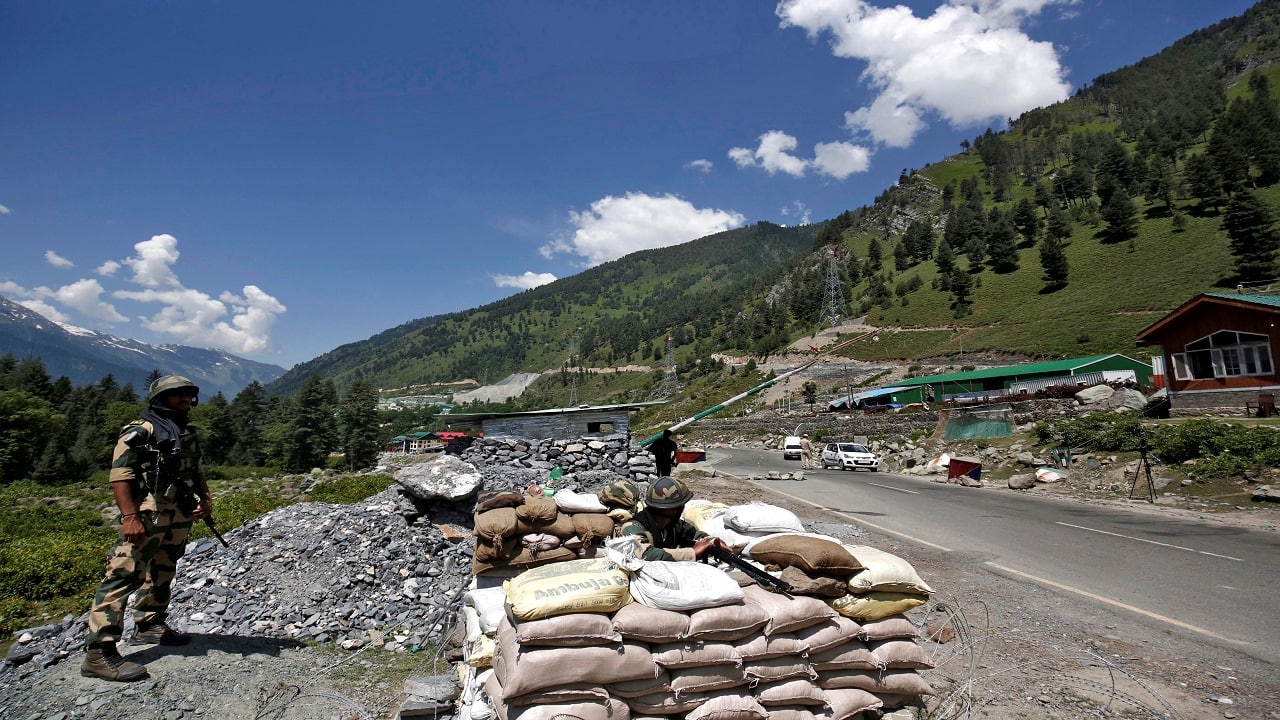As Indian and Chinese border troops in eastern Ladakh stare each other down in the biggest military confrontation in over 50 years, an uneasy world is looking for signs of de-escalation of the conflict. The tragic violence on June 15 saw soldiers of China’s People’s Liberation Army (PLA) attacking and killing at least 20 Indian soldiers, including a colonel. Although the number of Chinese casualties in the carnage is not known, scores of PLA soldiers are reported to have been killed and many injured.
Minor skirmishes on the 3,400-km-long disputed India-China border are not uncommon. Nevertheless, there were clear signs of Chinese mal-intent since April when unusually large numbers of PLA troops crossed the Line of Actual Control (LAC) into the Galwan and Pangong Tso areas. This was not exactly temporary squatting on disputed land either, as had happened several times over the years. The Chinese now seemed to be digging in for the long haul, with bunkers and artillery guns covering its troop deployment right under the nose of the Indian Army.
So was India caught off guard in the mountainous border region by its eastern neighbour’s deadly game of Chinese checkers? Unfortunately, there is little evidence to suggest otherwise.
In fact, going by United States’ intelligence reports, the Chinese have been steadily encroaching on key border areas for a while and currently occupies around 550 sq kms of land belonging to India. China’s wonted tactic is to stealthily nibble away at Indian territory and occupy it, and later claim sovereignty over it.
In that sense, the latest violence is markedly different from previous incidents — not just because of the tragic death toll, but for the fact that many clashes happened in numerous places. What is more sinister to the PLA’s encroachments this time round is that there is an element of déjà vu: back in July 1962, PLA soldiers had similarly intruded into the Galwan Valley, which led to an all-out war three months later.
Curiously, in the last 58 years, the Galwan Valley was one of the least contested areas along the LAC. Yet the PLA Western Theatre Command spokesperson Colonel Zhang Shuili said, soon after the June 15 violence, that “China always owned sovereignty over the Galwan Valley region.” Indian sources interpret this as an effort to create fresh areas of differences even as older differences turn into disputes. This is in line with the duplicity with which China always treated the border dispute with India.
In early 1960, then Chinese Prime Minister Chou En-lai told his Indian counterpart Jawaharlal Nehru that China would never accept the McMahon Line drawn on the basis of the watershed principle (an established international practice for settling boundaries). However, in October 1960, China signed its border settlement with Myanmar based on the McMahon Line.
It is no secret that the growing Chinese belligerence along the LAC owes in large part to Beijing’s exaggerated jitters at India’s efforts to build logistical infrastructure in the region. For years, China exploited its first mover advantage in building an extensive road and rail network around the LAC. For instance, the road linking Tibet and Xinjiang traverses Indian territory near the LAC.
India has only itself to blame for sitting on its hands all the while and not getting into the act for so long. The road to Daulat Beg Oldie — the highest airfield in the world which offers the Indian army a panoramic view of the Karakoram highway linking China and Pakistan — has taken years to build. A network of roads leading off this is also being built. Beijing evidently fears the possibility of this infrastructure, at some point, helping India occupy some of the disputed territories.
It is also not implausible that China — smarting from its international isolation over the COVID-19 pandemic, and trying to distract a disillusioned Chinese population — is upping the ante on the boundary row with India. By betting on a limited conflict with India, Beijing could be hoping to set the clock back on India's economic development and rise on the international stage.
However, the costs of a limited war for both countries far outweigh any potential gains. China, in particular, would be loath to commit the strategic folly of igniting a border conflict with India, weakening Beijing’s ability to meet more important security challenges elsewhere in the South China Sea. By this logic, it would seem the clear and present danger for potential escalation of fighting in eastern Ladakh is unlikely to lead to full-blown hostilities.
More likely, both sides will return to the negotiating table to try and consolidate their grip on key strategic points along the LAC so that they can defend the areas under their control.
Prakash Chandra is former editor of the Indian Defence Review. Views are personal.
Discover the latest Business News, Sensex, and Nifty updates. Obtain Personal Finance insights, tax queries, and expert opinions on Moneycontrol or download the Moneycontrol App to stay updated!










